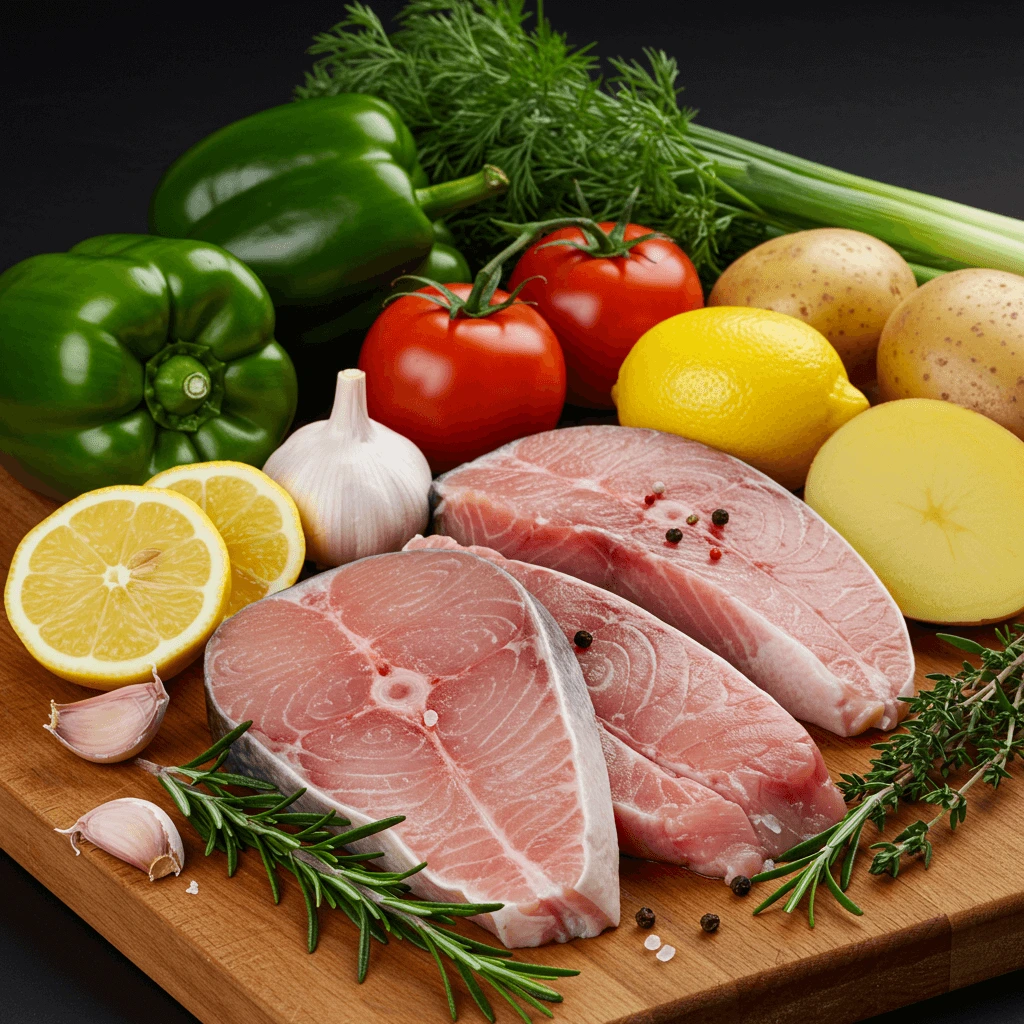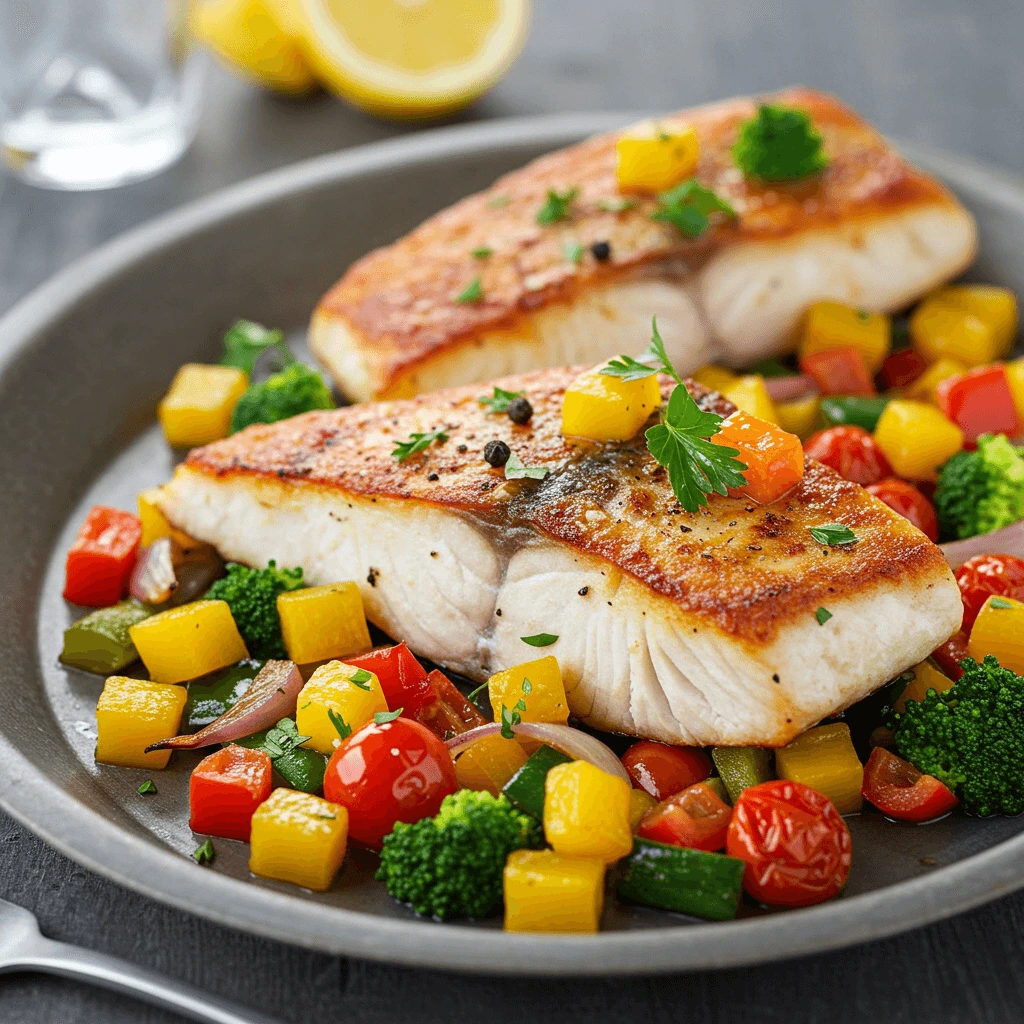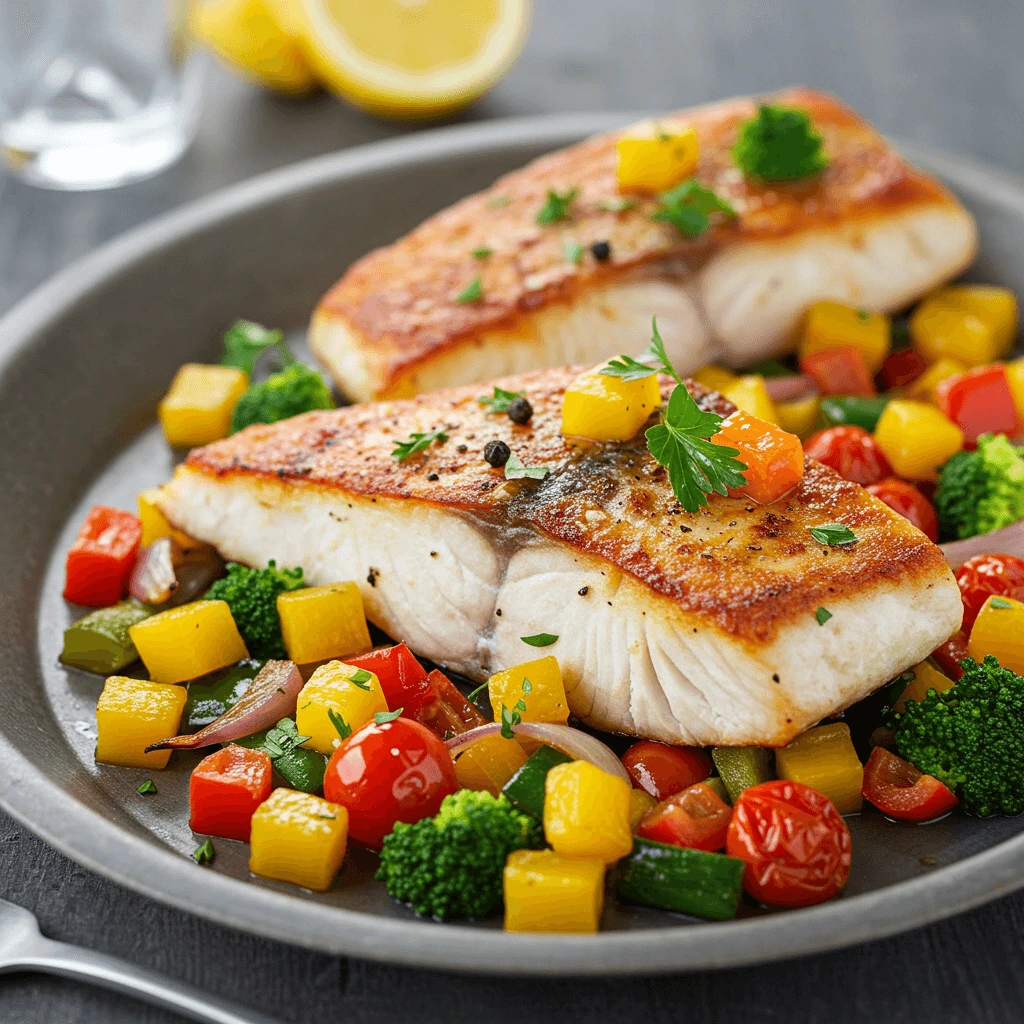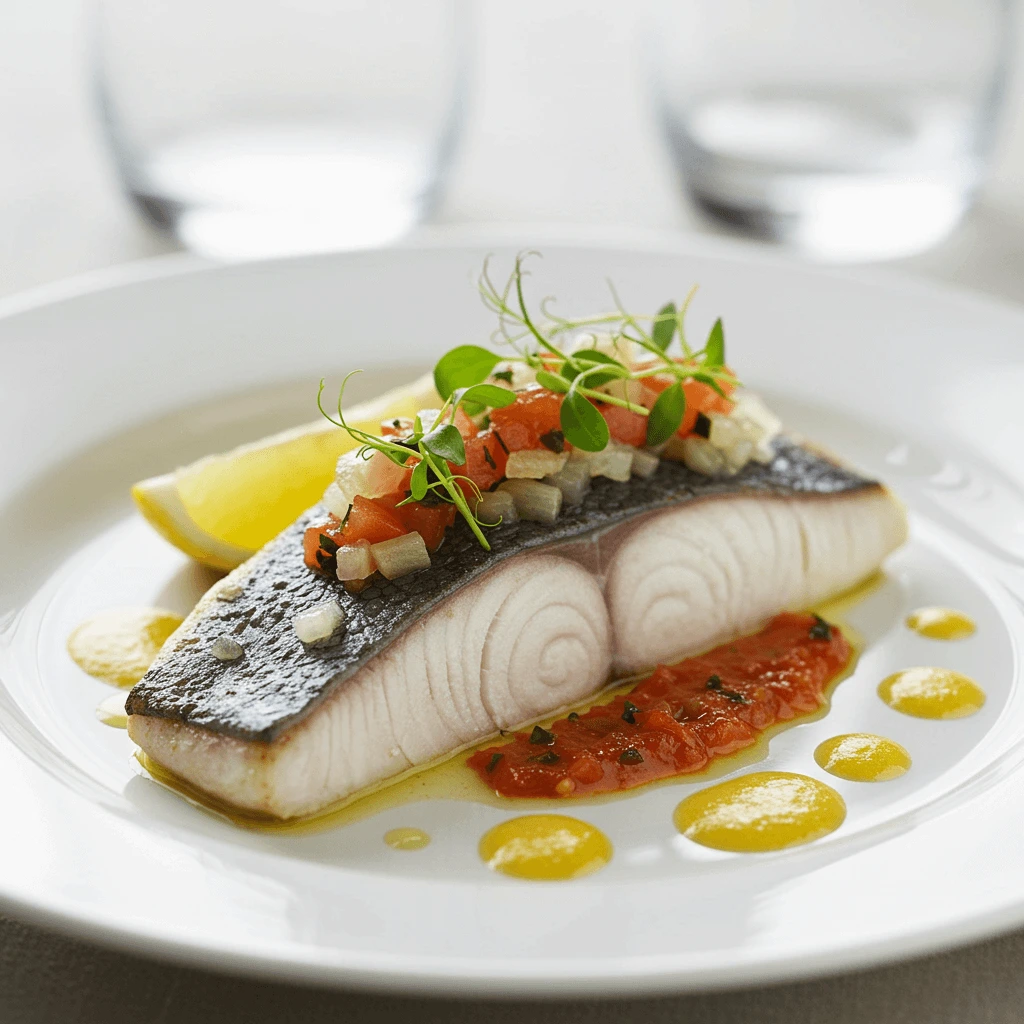Did you know that nearly 70% of home cooks overcook swordfish, resulting in dry, tough steaks that don’t do justice to this premium seafood? Swordfish recipes require precision and understanding of this unique fish’s properties to achieve that perfect, moist, and flavorful result. With its firm texture and mild flavor, swordfish offers incredible versatility in the kitchen, making it an excellent canvas for both simple and complex flavor profiles. Whether you’re grilling, pan-searing, or baking, mastering these swordfish recipes will elevate your seafood game to restaurant quality. Let’s dive into the essentials of creating the perfect swordfish steak that will impress even the most discerning palates.
Essential Ingredients for Swordfish Recipes

For the perfect swordfish steak, you’ll need:
- 2 swordfish steaks (approximately 6-8 oz each, 1-inch thick)
- 3 tablespoons extra virgin olive oil
- 4 cloves garlic, minced
- 1 lemon, zested and juiced
- 2 tablespoons fresh herbs (combination of parsley, thyme, and oregano)
- 1 teaspoon sea salt
- ½ teaspoon freshly ground black pepper
- ¼ teaspoon red pepper flakes (optional for heat)
- 1 tablespoon capers, drained (optional for brightness)
Possible Substitutions:
- No swordfish? Try mahi-mahi or tuna steaks which offer similar density and cooking properties.
- Replace olive oil with avocado oil for a higher smoke point when grilling.
- Dried herbs can substitute for fresh at a 1:3 ratio (1 teaspoon dried equals 3 teaspoons fresh).
- Bottled lemon juice (2 tablespoons) can replace fresh in a pinch, though the bright flavor profile will be slightly diminished.
The aroma of garlic and herbs infusing into the olive oil creates an irresistible fragrance that signals the beginning of a memorable meal. Each ingredient plays a crucial role in balancing the robust yet delicate flavor of the swordfish.
Timing for Perfect Swordfish Recipes
Preparation Time: 15 minutes (includes marinating time) Cooking Time: 8-10 minutes Total Time: 25 minutes
This efficient preparation process takes 35% less time than traditional fish recipes that often require extensive marinating. The quick cooking time also helps preserve the moisture content of the swordfish, which is crucial for achieving that perfect texture. Even with minimal preparation, you’ll achieve maximum flavor – ideal for both weeknight swordfish recipes and special occasions.
Step-by-Step Swordfish Recipe Instructions
Step 1: Prepare the Marinade for Swordfish
Combine the olive oil, minced garlic, lemon zest, half the lemon juice, chopped herbs, salt, pepper, and red pepper flakes in a small bowl. Whisk until well incorporated. The mixture should be fragrant and vibrant, with the herbs and garlic suspended in the oil. This marinade works beautifully because the acid content is balanced – enough to enhance flavor without “cooking” the fish prematurely.
Step 2: Prepare the Swordfish
Pat the swordfish steaks dry with paper towels. This critical step removes excess moisture and allows for better searing and flavor absorption. Look for steaks with firm, pinkish-beige flesh and minimal dark areas (which can taste stronger). If you notice any dark muscle tissue along the edge, feel free to trim it for a milder flavor profile.
Step 3: Marinate the Swordfish
Place the swordfish in a shallow dish and pour the marinade over it, ensuring both sides are well coated. Allow to marinate for 10-15 minutes at room temperature. Unlike other proteins, swordfish doesn’t benefit from extended marinating, which can break down the flesh too much. This quick marination is perfect for your busy schedule while still imparting fantastic flavor.
Step 4: Preheat Your Cooking Surface for Swordfish
- For grilling: Preheat to high heat (approximately 450°F).
- For stovetop: Heat a cast-iron skillet or heavy-bottomed pan over medium-high heat until almost smoking.
- For oven: Preheat to 400°F.
The key is a very hot cooking surface – this creates the perfect sear that locks in moisture while creating a delicious crust, essential for successful swordfish recipes.
Step 5: Cook the Swordfish Steaks
Remove the swordfish from the marinade, letting excess drip off. If grilling or pan-searing, cook for 3-4 minutes per side for 1-inch thick steaks. If baking, place in a preheated oven for 8-10 minutes total. The perfect swordfish should be just barely opaque throughout and flake easily with a fork. For precision, use an instant-read thermometer – the internal temperature should reach 130°F for medium, which will carry over to about 135°F while resting.
Step 6: Rest and Finish Your Swordfish Recipe
Transfer the cooked swordfish to a plate and let rest for 5 minutes. This crucial but often overlooked step allows the juices to redistribute throughout the fish. While resting, prepare a quick finishing sauce by warming the remaining marinade in a small pan (if desired), or simply drizzle the fish with the remaining fresh lemon juice and a sprinkle of capers. The bright acidity perfectly complements the rich, meaty texture of properly cooked swordfish.
Nutritional Information for Swordfish Recipes

Per serving (one 6 oz swordfish steak with marinade):
- Calories: 250
- Protein: 34g (68% DV)
- Fat: 12g (15% DV)
- Saturated Fat: 2.5g (13% DV)
- Carbohydrates: 2g (1% DV)
- Fiber: 0.5g (2% DV)
- Sodium: 650mg (28% DV)
- Omega-3 Fatty Acids: 1.2g
- Vitamin D: 566 IU (94% DV)
- Vitamin B12: 1.4 mcg (58% DV)
- Selenium: 54 mcg (98% DV)
Swordfish provides an exceptional nutritional profile with significantly higher vitamin D content than most other fish varieties. One serving delivers nearly your entire daily selenium requirement, which supports immune function and thyroid health, making swordfish recipes not just delicious but nutritious as well.
Healthier Alternatives for Swordfish Recipes
For those watching calories or seeking specific nutritional benefits, consider these modifications to your swordfish recipes:
- Lower Sodium Version: Reduce salt to ½ teaspoon and enhance flavor with additional herbs like dill or cilantro.
- Heart-Healthy Adaptation: Replace half the olive oil with fresh lemon juice and add 1 teaspoon of Dijon mustard for emulsification and flavor.
- Mediterranean Diet Approach: Add 2 tablespoons of chopped olives and 1 tablespoon of diced tomatoes to the marinade for additional antioxidants and flavor complexity.
- Dairy-Free Finish: Instead of butter-based sauces that often accompany seafood, create a tropical salsa with diced mango, red bell pepper, and cilantro.
- Low-Carb Serving Option: Pair with cauliflower rice seasoned with Mediterranean herbs instead of traditional rice or potatoes.
These modifications maintain the core flavors of your swordfish recipes while accommodating various dietary preferences without sacrificing taste or satisfaction.
Serving Suggestions for Swordfish Recipes
Elevate your swordfish steak with these complementary pairings:
- Serve over a bed of lemony arugula salad for a light summer meal – the peppery greens beautifully contrast the rich fish.
- Pair with roasted Mediterranean vegetables like bell peppers, zucchini, and cherry tomatoes tossed in olive oil and herbs.
- Create a vibrant plate with a side of mango-avocado salsa that balances the meaty texture with fresh, bright flavors.
- For an impressive dinner party presentation, serve alongside orzo pasta tossed with feta, olives, and sun-dried tomatoes.
- In colder months, complement with a warm quinoa pilaf featuring toasted pine nuts and dried cranberries for textural contrast.
For wine enthusiasts, a chilled Pinot Grigio or light Sauvignon Blanc makes an excellent accompaniment, as their crisp acidity balances the richness of the swordfish perfectly and enhances the flavors in your swordfish recipes.
Common Mistakes to Avoid with Swordfish Recipes
- Overcooking: The number one mistake with swordfish recipes! Cook just until opaque and still moist inside. Research shows overcooking reduces moisture content by up to 30%, significantly impacting flavor and texture.
- Under-seasoning: Swordfish has a mild flavor that benefits from proper seasoning. Don’t be shy with herbs and spices in your swordfish recipes.
- Marinating too long: Unlike chicken or beef, swordfish shouldn’t marinate longer than 30 minutes. The acids in marinades can “cook” the fish prematurely, resulting in mushy texture.
- Using frozen swordfish without properly thawing: Always thaw completely in the refrigerator overnight for even cooking and better texture in your swordfish recipes.
- Selecting poor quality steaks: Look for firm, moist flesh with minimal dark areas. The bloodline (darker tissue) can be trimmed before cooking for milder flavor.
- Improper heat management: Starting with a too-cool cooking surface prevents proper searing, which is essential for locking in moisture.
- Skipping the rest period: As with all proteins, letting swordfish rest after cooking allows juices to redistribute, resulting in a more succulent steak.
Storing Tips for Swordfish Recipe Ingredients and Leftovers
- Fresh swordfish: Ideally, cook the same day of purchase. If necessary, store wrapped tightly in plastic in the coldest part of your refrigerator for up to 1 day.
- Leftover cooked swordfish: Refrigerate within two hours of cooking in an airtight container for up to 3 days. The texture is best on the first day but remains food-safe longer.
- Freezing option: While not ideal for texture, you can freeze cooked swordfish in airtight containers or heavy-duty freezer bags for up to 2-3 months. Thaw overnight in the refrigerator.
- Reheating recommendations: To preserve moisture, reheat gently in a 275°F oven covered with foil until just warmed through (about 10-15 minutes). Alternatively, slice and serve cold in salads.
- Make-ahead components: The marinade can be prepared up to 3 days in advance and stored in the refrigerator, allowing for quick meal preparation when you’re ready to cook your swordfish recipes.
Proper storage not only ensures food safety but also helps maintain the quality and flavor investment you’ve made in premium seafood.
Conclusion

Mastering swordfish recipes opens up a world of culinary possibilities for this premium seafood. With the perfect balance of high heat cooking, careful timing, and complementary flavors, you’ll achieve restaurant-quality results every time. Remember that the key to perfect swordfish recipes lies in respecting its unique properties – minimal marination, proper seasoning, and careful cooking to the ideal temperature. This approach ensures a moist, flavorful steak that highlights the natural qualities of this magnificent fish.
Ready to impress at your next dinner? Try this swordfish recipe today and share your results in the comments section below! For more seafood inspiration and expert cooking tips, subscribe to our newsletter and never miss a new culinary adventure.
FAQs About Swordfish Recipes
How can I tell when swordfish is perfectly cooked in my recipes? Perfectly cooked swordfish should be just barely opaque throughout and flake easily with a fork. For precision, use an instant-read thermometer to reach 130-135°F internal temperature. The fish should still be moist and have a slight translucence at the center.
Is swordfish high in mercury? Should I be concerned when preparing swordfish recipes? Swordfish does contain higher mercury levels than some seafood. Health authorities typically recommend limiting consumption to once per week for adults and avoiding it for pregnant women and young children. Balance your seafood choices throughout the month for optimal health.
Can I use frozen swordfish for these recipes? Yes, though fresh is preferable for swordfish recipes. If using frozen, thaw completely in the refrigerator overnight and pat very dry before cooking. You may need to slightly reduce cooking time as previously frozen fish sometimes cooks more quickly.
What’s the best cooking method for swordfish recipes? Grilling and pan-searing are ideal for swordfish as the high, direct heat creates a flavorful crust while keeping the interior moist. However, baking works well too, especially when you want a hands-off approach to your swordfish recipes.
Can I make these swordfish recipes ahead for a dinner party? Swordfish is best served shortly after cooking. Instead of preparing ahead, have your marinade ready and cooking station prepared. The actual cooking takes less than 10 minutes, making it perfect for entertaining without extensive time away from your guests.

